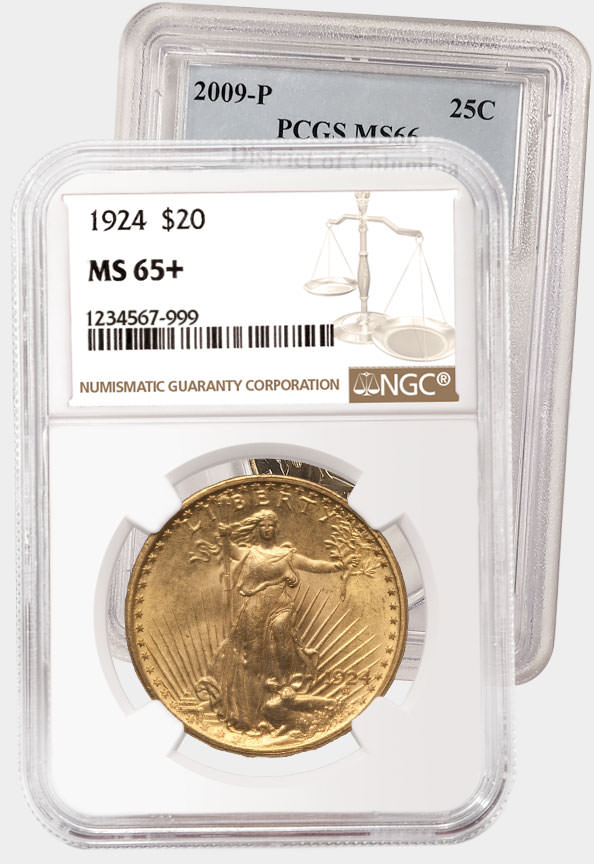USA Coin Album: Peace Dollars, Attractive and Affordable — Part 1
Posted on 6/9/2020
Last month's column on the short and sweet Braided Hair half cent series inspired me to look for another relatively small coin series that may be completed in uncirculated condition at a reasonable cost. The Peace dollars of 1921-35 are just such coins.
Agitation for a commemorative coin marking the end of World War I and the Allies' victory in it began shortly after the armistice of 1918. The matter was complicated, however, by Congress' failure to ratify the Treaty of Versailles. Technically, the United States remained in a state of war with Germany and the other Central Powers until 1921, when it finally signed a separate treaty that came without the international entanglements negotiated at Versailles. This separate treaty was still pending when silver dollar coinage resumed in May of 1921, following a 17-year hiatus. Millions of pieces had been melted during 1919-20 to assist our allies in curbing speculation in the price of silver, and the Pittman Act of 1918 that prompted this action also required that these coins later be replaced with dollars made from newly-mined domestic bullion. Silver dollars circulated only in a few western states, but those states' congressional delegations forced through this clause to protect local mining interests and maintain the price of silver.
When production of the replacement coins commenced in the spring of 1921, the new dollars bore George T. Morgan's old Liberty Head design from 1878. The master hubs for this coin type had been destroyed in 1910 along with all other hubs and dies for coins no longer in production, and Morgan himself had to reproduce them using actual coins as a guide. He replicated the original design almost perfectly, though there were a few minor differences.
Collectors were disappointed with the revival of a coin type last minted in 1904, and the campaign to create a new silver dollar commemorating America's impending treaty with Germany gained further momentum. The American Numismatic Association had duly established a committee to seek a new peace dollar in 1920, and in December these individuals met with Representative Albert H. Vestal (R-Indiana), chairman of the House Committee on Coinage, Weights and Measures. Vestal later introduced a joint resolution for a peace dollar, but this twice failed to pass. Well into 1921 it was finally realized that no congressional action was needed, as the Morgan dollar had been produced for the statutory minimum of 25 years. Even more compelling was that the 1890 law requiring such a period specifically exempted the Liberty Head nickel and the Morgan dollar, both of which were considered at that time to be inferior designs!
The Treasury Department offered no objection to a new coin, provided that expenses were kept to a minimum. The impending treaty with Germany seemed to put a favorable blessing on the project, as did another development late in 1921. American and foreign delegates were about to meet in Washington, DC, to commence negotiations for a treaty limiting the size of the world's navies. This was an effort to curb the very sort of arms race that ultimately had led to the recent war, and the ANA's mission seemed all the more timely.
Thus was the stage set for an entirely new silver dollar emblematic of peace. James Earle Fraser, designer of the Indian Head/Buffalo nickel, was chairman of the Commission of Fine Arts, and it was he who arranged for a design competition. It was already November of 1921, and the coin was supposed to bear that same year's date, so the time frame was tight indeed. This was an invitational competition made only to eight artists of known ability, and they were given a free hand in their submissions. The only requirements, beyond the usual statutory inscriptions, were that the obverse depicts a head of Liberty and the reverse an eagle.
The models of Antonio de Francisci were selected unanimously by the commission. He included two alternative reverse designs, one showing an eagle breaking a sword in its beak and a second almost identical to the coin as ultimately issued. The only distinction is that the eagle rested upon a broken sword, which projected from either side of its talons. The symbolism of this component failed to overcome the impression it gave of defeat, and on December 23, Chief Engraver Morgan skillfully deleted the sword from the master hub without damaging adjacent features. He also performed some touch-up work on the master die taken from that hub.
Working hubs and working dies were produced as quickly as possible, yet coinage did not commence until December 28. In the next few days, just over a million 1921 Peace dollars were struck quite hastily. The results of this production were far from satisfactory, but that's a subject for next month.
David W. Lange's column, “USA Coin Album,” appears monthly in The Numismatist, the official publication of the American Numismatic Association.
Stay Informed
Want news like this delivered to your inbox once a month? Subscribe to the free NGC eNewsletter today!



